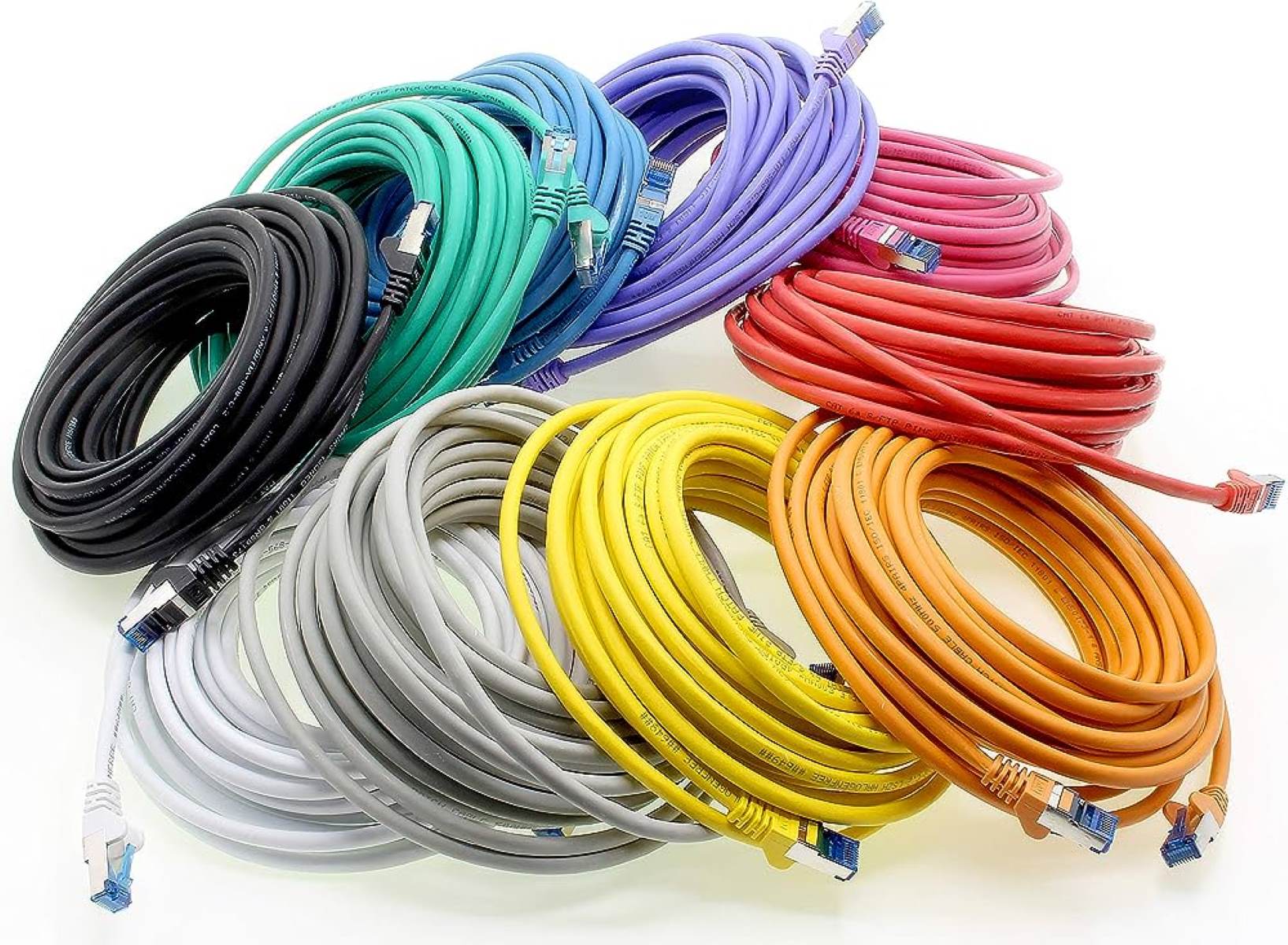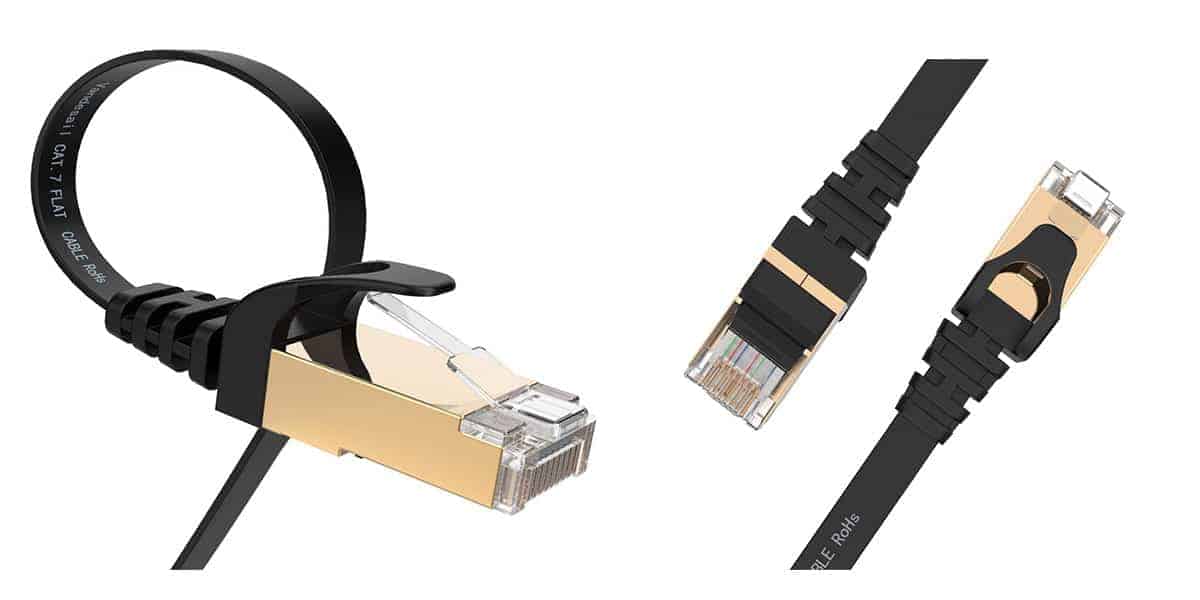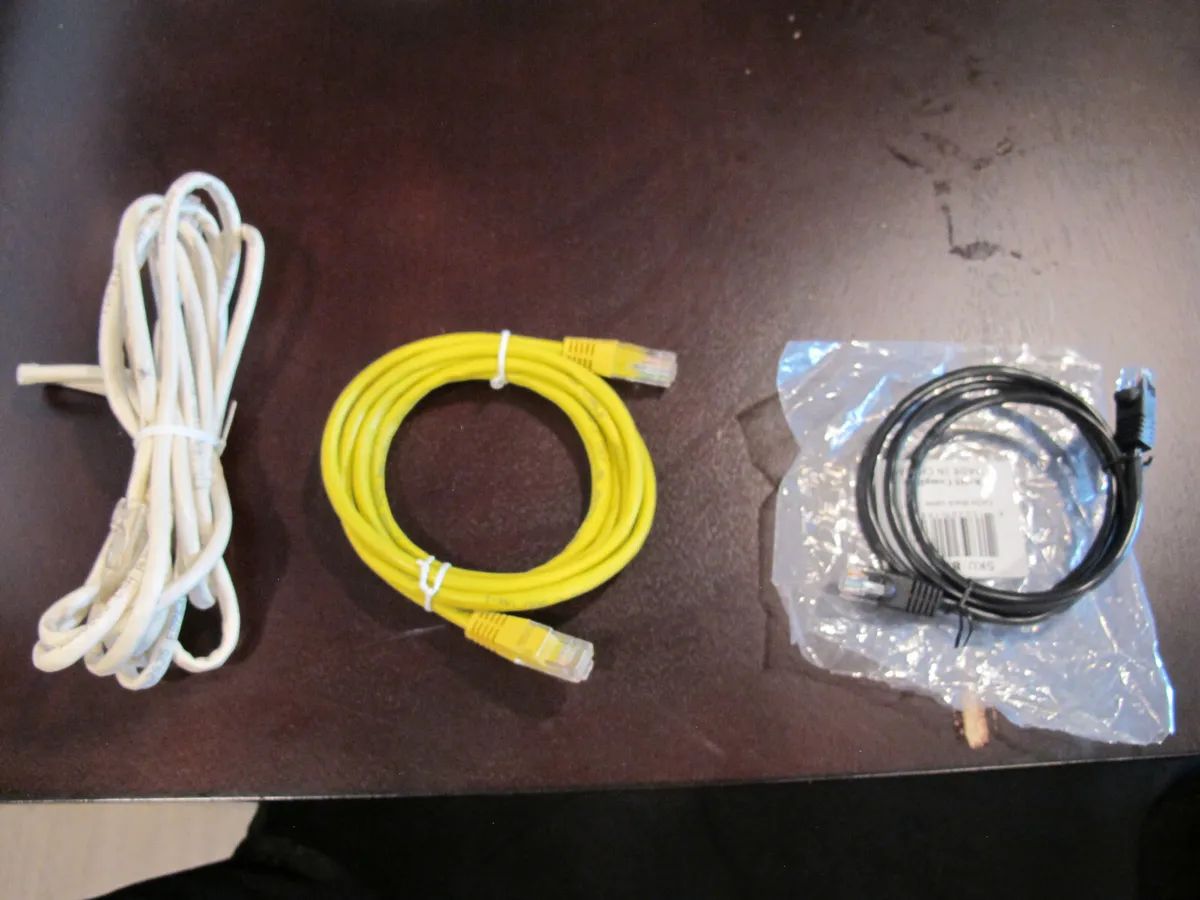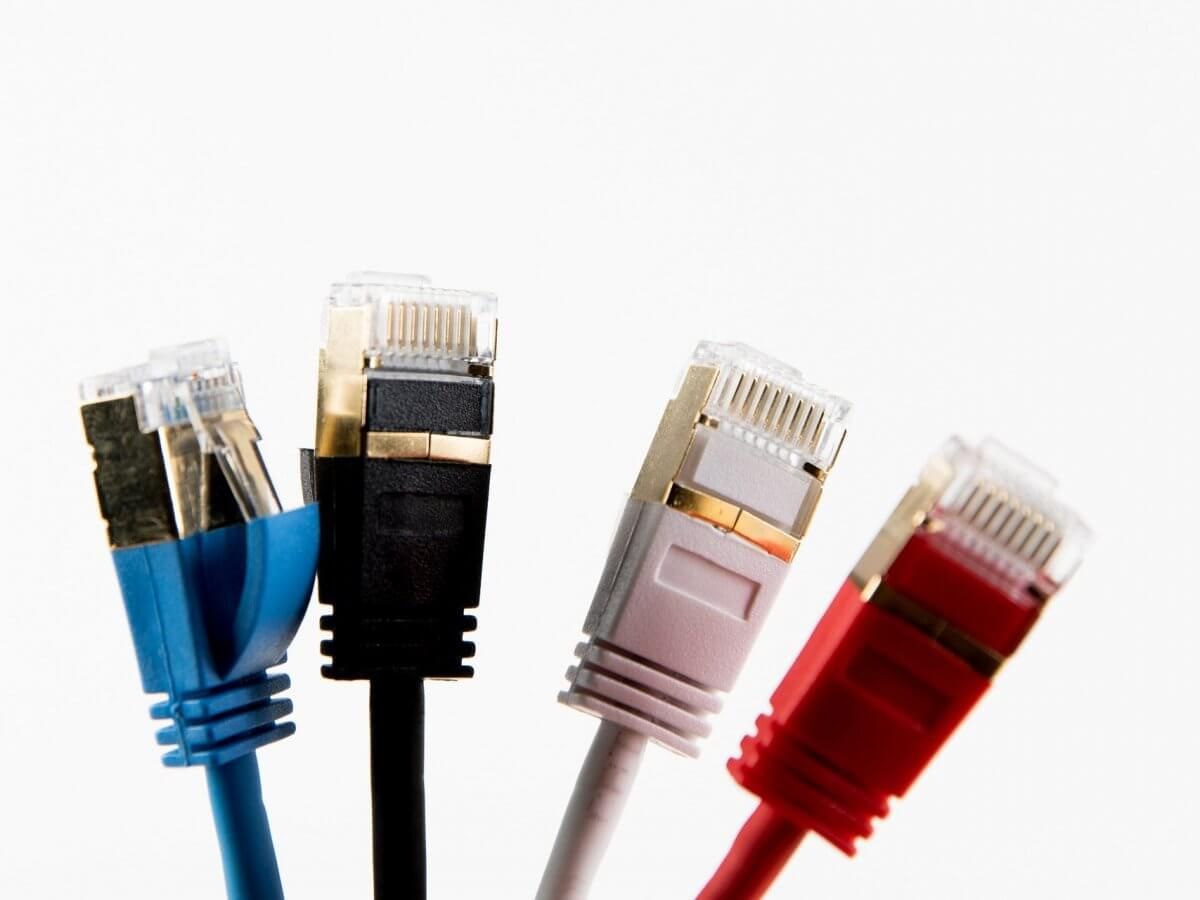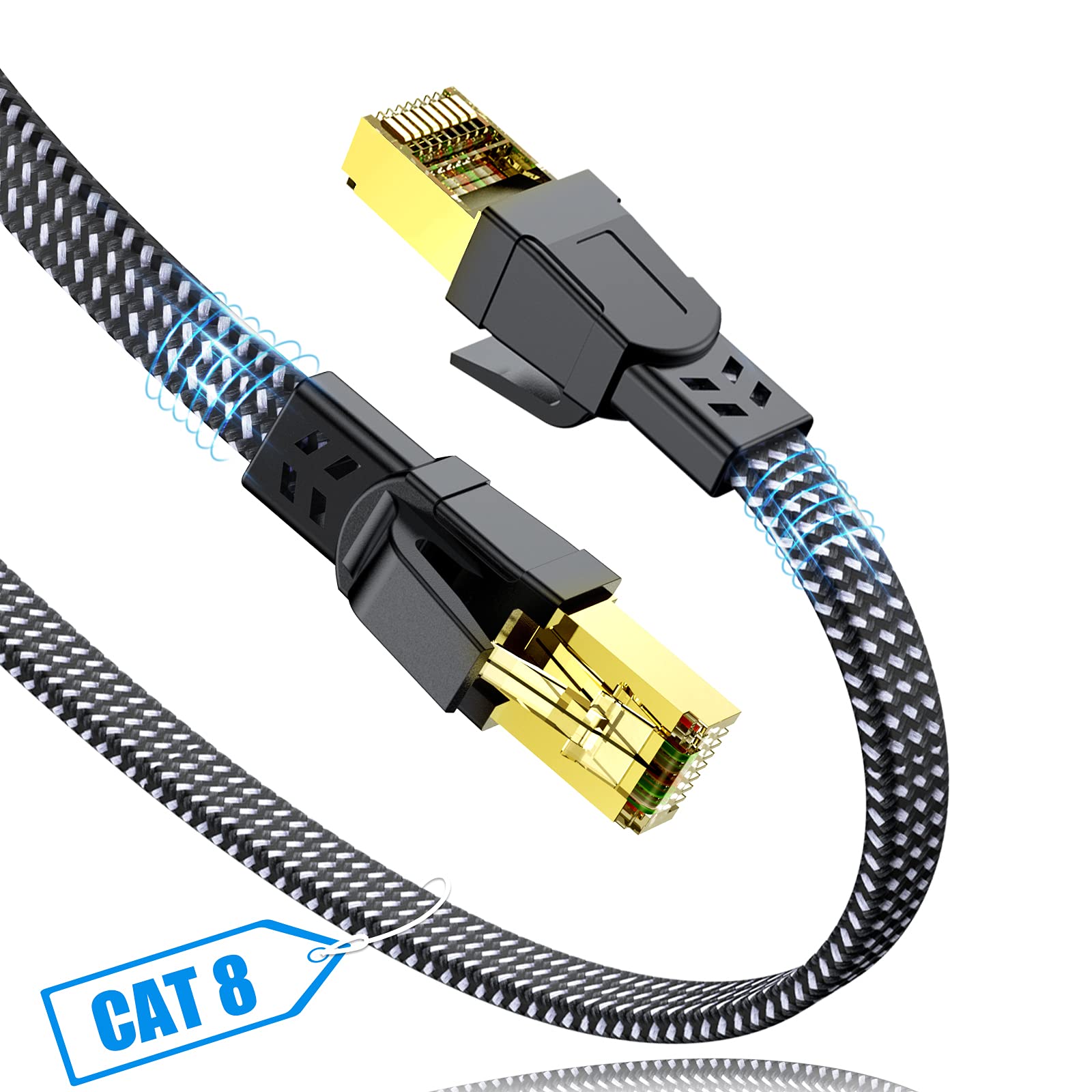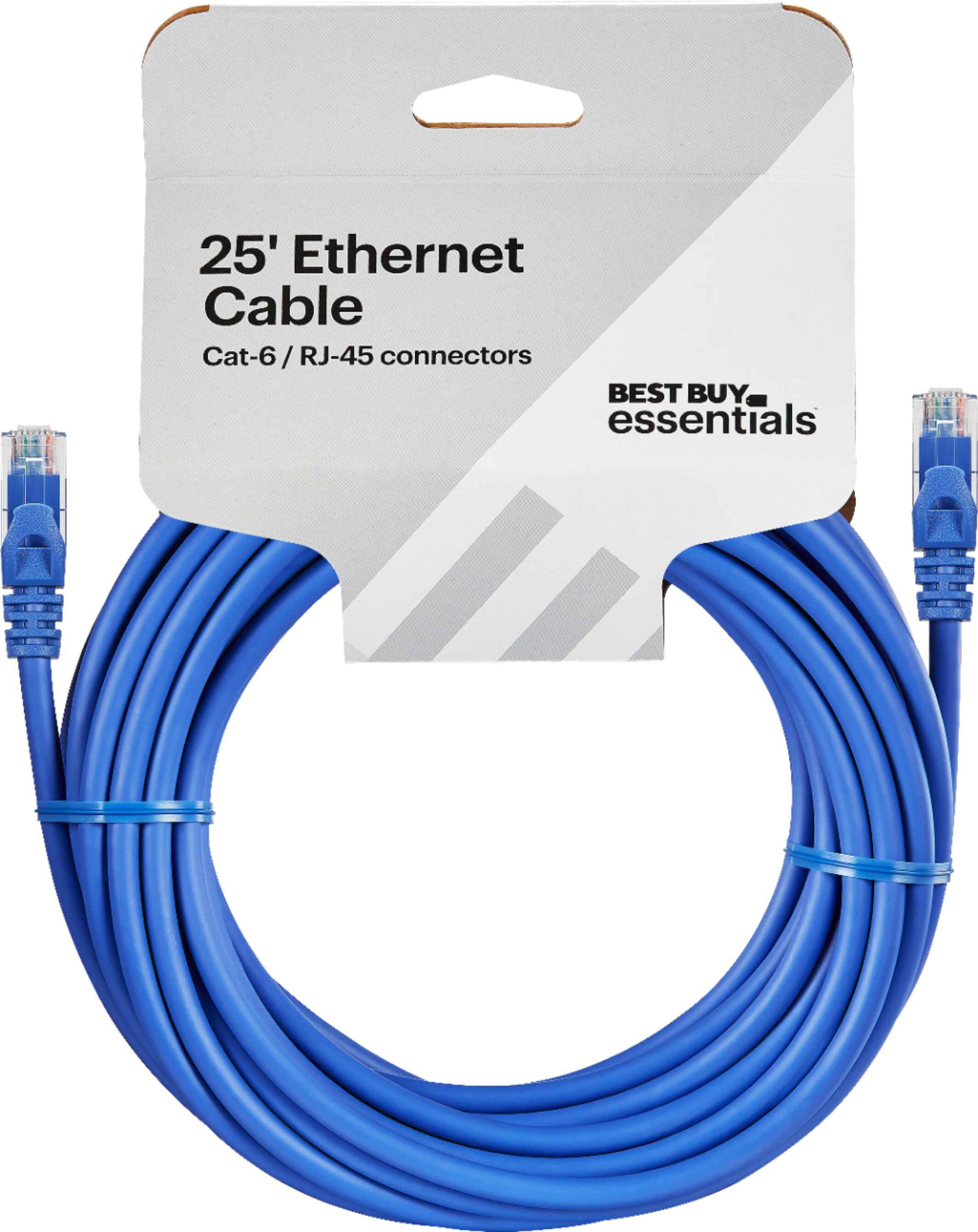Introduction
Ethernet cables are the backbone of wired networks, facilitating high-speed data transfer and reliable connectivity. When setting up a network, understanding the maximum cable length for Ethernet cables is crucial. Whether you are planning to install a network in your home, office, or data center, knowing the limitations of cable length can help you optimize your network performance and avoid unnecessary complications.
Ethernet cables are typically made of twisted pairs of copper wires that transmit data using electrical signals. As signals travel through the cable, they experience a degradation in quality due to various factors such as resistance, crosstalk, and interference. Therefore, there is a maximum length for Ethernet cables beyond which the signal may become too weak or corrupted, leading to data loss or a significant decrease in network performance.
This article aims to provide an overview of the maximum cable length for different types of Ethernet cables and explore the factors that can affect the cable length. Additionally, we will discuss the potential impact of cable length on network performance and examine methods for extending Ethernet cable length if needed.
Is There a Maximum Ethernet Cable Length?
Yes, there is a maximum length for Ethernet cables. The maximum cable length is determined by industry standards and the type of Ethernet cable being used. These standards define the maximum length that allows reliable data transmission without signal degradation or loss.
The most common types of Ethernet cables used today are Cat5e, Cat6, Cat6a, and Cat7. Each of these cables has different maximum length specifications. Cat5e cables, which are widely used in home and office networks, typically have a maximum length of 100 meters or 328 feet. This length includes both the horizontal cable length (between the device and the patch panel) and the vertical cable length (between floors or rooms).
On the other hand, Cat6 cables have a maximum length of 55 meters or 180 feet. The Cat6a cables, which are designed for higher data transmission rates, have a maximum length of 100 meters, similar to Cat5e cables. Finally, Cat7 cables, known for their superior shielding and performance, also have a maximum length of 100 meters.
It is important to note that these maximum cable lengths are specified for direct cable runs without any additional equipment in between. If you need to connect devices that are farther apart, you may need to consider using switches or other networking devices to extend the reach of your network. These devices can act as signal boosters, allowing you to overcome the limitations of the maximum cable lengths.
In addition to the maximum cable length limitations, it is important to follow proper installation and cable management practices to ensure optimal network performance. Properly terminated and well-maintained cables can further minimize signal loss and interference, maximizing the effective cable length.
Factors Affecting Ethernet Cable Length
Several factors can affect the maximum length of Ethernet cables and impact the performance of your network. Understanding these factors can help you ensure reliable data transmission and avoid potential issues.
1. Cable Type: The type of Ethernet cable you are using plays a significant role in determining the maximum length. Different cable categories, such as Cat5e, Cat6, Cat6a, and Cat7, have varying specifications and capabilities. Higher category cables generally have better signal integrity and can support longer cable lengths.
2. Signal Degradation: As signals travel through Ethernet cables, they experience attenuation, or signal loss. This degradation increases with cable length. The longer the cable, the weaker the signal becomes, potentially leading to data loss or errors. Factors like resistance, crosstalk, and electromagnetic interference (EMI) can contribute to signal degradation.
3. Signal-to-Noise Ratio: The signal-to-noise ratio (SNR) is the ratio of the desired signal strength to the background noise level. A higher SNR ensures a more reliable and accurate signal transmission. Longer cable lengths introduce more noise into the signal, reducing the SNR and potentially causing errors or degraded performance.
4. Transmission Speed: The maximum cable length can also vary depending on the desired transmission speed. Higher data rates require higher signal quality, which may result in reduced cable lengths. For example, the maximum length for Cat6 cables at 10 Gigabit Ethernet (10GbE) speeds is shorter compared to lower data rate applications.
5. Cable Quality: The quality of the Ethernet cable itself can impact the maximum attainable length. Cables with better construction, shielding, and insulation tend to have better signal integrity and can support longer cable runs. Choosing high-quality cables from reputable manufacturers can help ensure optimal performance and reliability.
6. Environmental Factors: Environmental conditions, such as temperature, humidity, and electromagnetic interference, can also affect the maximum cable length. Extreme temperatures or exposure to moisture can degrade cable performance, while nearby sources of electromagnetic interference can introduce noise and disrupt signal transmission.
By considering these factors and selecting appropriate cables, managing signal quality, and maintaining a suitable network environment, you can optimize the performance and reliability of your Ethernet network.
Maximum Length for Cat5e Ethernet Cable
Cat5e (Category 5e) Ethernet cables are one of the most commonly used cables for Ethernet networking. They are designed to support data transmission speeds of up to 1 Gigabit per second (Gbps) and are suitable for most home and office networks.
The maximum length for Cat5e Ethernet cables is 100 meters or 328 feet. This length includes both the horizontal cable length, which connects devices to the patch panel or wall outlet, and the vertical cable length, which connects different floors or rooms. It is essential to consider both lengths when planning your network infrastructure.
Exceeding the maximum cable length can result in signal degradation and data loss. The signal weakens as it travels through the cable, and factors such as resistance and crosstalk can further interfere with the quality of the signal. By adhering to the 100-meter limit, you can maintain reliable and efficient data transmission.
It’s important to note that the maximum cable length for Cat5e Ethernet cables is specified for direct cable runs without any additional networking equipment in between. If you need to connect devices that are located farther apart, you can use switches or repeaters to extend the reach of your network.
Using these additional networking devices allows you to overcome the limitations of cable length by boosting the signal. However, it’s essential to choose high-quality switches and repeaters to maintain signal integrity and prevent performance degradation.
Proper installation and cable management practices are also crucial for ensuring optimal performance. Well-terminated cables, avoiding sharp bends and kinks, and minimizing cable interference can help maintain signal quality and reduce the risk of data transmission issues.
Additionally, using higher-quality Cat6, Cat6a, or Cat7 cables can provide better performance and allow for longer cable lengths if needed in your network setup. However, it’s essential to ensure that all devices and networking equipment in your infrastructure support these higher category cables to fully harness their benefits.
By understanding the maximum length limitations and following best practices, you can ensure a reliable and efficient Ethernet network using Cat5e cables.
Maximum Length for Cat6 Ethernet Cable
Cat6 (Category 6) Ethernet cables are an upgraded version of Cat5e cables and are designed to support higher data transmission speeds and improved performance. They are commonly used in environments where high-speed networking is required, such as data centers, server rooms, and offices.
The maximum length for Cat6 Ethernet cables is 55 meters or 180 feet. This length includes both the horizontal cable length, which connects devices to the patch panel or wall outlet, and the vertical cable length, which connects different floors or rooms. It is important to consider both lengths when planning your network infrastructure.
Cat6 cables have improved signal quality and reduced interference compared to Cat5e cables, allowing them to support higher data transmission rates. However, due to the higher frequency used for transmission, the maximum cable length is shorter for Cat6 cables.
Exceeding the maximum cable length for Cat6 cables can result in signal degradation and decreased network performance. The signal weakens as it travels through the cable, and factors such as resistance, crosstalk, and electromagnetic interference can further impact the signal quality. By adhering to the 55-meter limit, you can maintain reliable and efficient data transmission.
To connect devices that are located farther apart, you can use switches or repeaters in your network infrastructure. These devices act as signal boosters, extending the reach of the network beyond the maximum cable length limitation. However, it is important to use high-quality switches and repeaters to ensure signal integrity and prevent performance degradation.
Proper installation and cable management practices are critical for optimal performance. Well-terminated cables, avoiding sharp bends and kinks, and minimizing cable interference are essential for maximizing the signal quality and reducing the risk of data transmission issues.
If your network requires longer cable lengths, you may consider using Cat6a or Cat7 cables, which have higher specifications and can support longer distances. However, it is crucial to ensure that all devices and networking equipment in your infrastructure support these higher category cables to fully utilize their benefits.
By understanding the maximum length limitations and following best practices, you can ensure a reliable and high-performance Ethernet network using Cat6 cables.
Maximum Length for Cat6a Ethernet Cable
Cat6a (Category 6a) Ethernet cables are an enhanced version of Cat6 cables and are designed to support even higher data transmission speeds and improved performance. They are commonly used in demanding networking environments that require ultra-fast and reliable connections, such as data centers, server farms, and high-density network installations.
The maximum length for Cat6a Ethernet cables is 100 meters or 328 feet. This length includes both the horizontal cable length, which connects devices to the patch panel or wall outlet, and the vertical cable length, which connects different floors or rooms. It is important to consider both lengths when planning your network infrastructure.
Cat6a cables are specifically designed to mitigate the issues that arise with longer cable lengths. They have better shielding and insulation, which reduces signal loss and interference, allowing for consistent and reliable data transmission over longer distances.
By adhering to the 100-meter limit for Cat6a cables, you can ensure optimal performance and minimal signal degradation. It is crucial to avoid exceeding this limit, as it can result in decreased network performance and potential data loss.
In situations where the required cable length exceeds the maximum limit of Cat6a cables, you may need to use switches or repeaters to extend the reach of your network. These devices act as signal amplifiers, boosting the weakened signal strength and allowing for longer cable runs. However, it is important to use high-quality switches and repeaters to maintain signal integrity and prevent performance degradation.
Proper installation and cable management practices are essential for maximizing the performance of Cat6a cables. Ensuring proper termination, avoiding sharp bends and kinks, and minimizing cable interference are crucial for maintaining optimal signal quality and minimizing the risk of data transmission issues.
When investing in Cat6a cables, it is important to ensure that all devices and networking equipment in your infrastructure support this higher category. Using Cat6a cables with devices that only support lower categories, such as Cat6 or Cat5e, will limit the overall performance and capabilities of your network.
By understanding the maximum length limitations and following best practices, you can create a reliable and high-speed Ethernet network using Cat6a cables.
Maximum Length for Cat7 Ethernet Cable
Cat7 (Category 7) Ethernet cables are the latest and most advanced standard in Ethernet cabling. They are designed to provide even higher data transmission speeds and superior performance compared to previous cable categories. Cat7 cables are primarily used in environments where high-speed and low-latency connections are crucial, such as data centers, advanced gaming setups, and multimedia streaming applications.
The maximum length for Cat7 Ethernet cables is 100 meters or 328 feet. This length includes both the horizontal cable length, which connects devices to the patch panel or wall outlet, and the vertical cable length, which connects different floors or rooms. It is important to consider both lengths when planning your network infrastructure.
Cat7 cables are built with exceptional shielding and insulation, which significantly reduces signal loss and electromagnetic interference (EMI). This allows for consistent and reliable data transmission over longer distances compared to lower category cables.
By adhering to the 100-meter limit for Cat7 cables, you can ensure optimal performance and minimal signal degradation. It is important to avoid exceeding this limit, as it can result in decreased network performance and potential data loss.
If you require longer cable lengths in your network setup, you may need to utilize switches or repeaters to extend the reach. These devices act as signal amplifiers, compensating for the signal loss and allowing for longer cable runs. However, it is crucial to use high-quality switches and repeaters that are compatible with Cat7 cables to maintain signal integrity and maximize network performance.
Proper installation and cable management practices are essential for maximizing the performance of Cat7 cables. Ensuring proper termination, minimizing cable bends and kinks, and avoiding sources of EMI are crucial for maintaining optimal signal quality and minimizing the risk of data transmission issues.
It is important to note that Cat7 cables are backward compatible with lower category devices, such as Cat6 and Cat5e. However, using Cat7 cables with devices that do not support these higher speeds will not provide the full benefits of Cat7’s capabilities.
By understanding the maximum length limitations and following best practices, you can create a reliable and high-performance Ethernet network using Cat7 cables, enabling faster and more efficient data transmission for your applications and devices.
Does Cable Length Impact Network Performance?
Yes, the length of Ethernet cables can impact network performance. As the cable length increases, the quality of the signal degrades, resulting in potential data loss, errors, and decreased network performance. The extent of this impact depends on various factors, including the type of cable, signal interference, and the data transmission speed required by the network.
Longer cable lengths introduce more resistance, leading to higher signal attenuation. This attenuation weakens the signal as it travels along the cable, potentially causing data corruption and requiring retransmission of packets. As a result, data transfer speeds may slow down, and network latency can increase, affecting the overall performance of the network.
The attenuation is more pronounced in higher frequency signals, which are typically used for faster data rates. For example, Cat6 cables are designed to support 1 Gigabit per second (Gbps) speeds, but as the cable length approaches its maximum limit, the transmission speed may drop to lower rates.
In addition to signal degradation, longer cable lengths are more susceptible to crosstalk and electromagnetic interference (EMI). Crosstalk occurs when nearby wires interfere with each other, causing signal interference and reducing data integrity. EMI is caused by external electromagnetic fields from various sources such as electrical equipment and power lines, which can also disrupt signal transmission.
To mitigate the impact of cable length on network performance, it is important to adhere to the maximum cable length specifications for the specific cable category being used. This ensures that the signal quality remains within acceptable parameters, minimizing data loss and maintaining optimal network performance.
Using high-quality cables with proper shielding and insulation also helps reduce the impact of signal degradation and interference. Additionally, employing appropriate signal amplification techniques, such as using switches or repeaters strategically placed along the cable route, can extend the reach of the network and compensate for signal loss.
It’s worth noting that shorter cable lengths generally result in better network performance. Therefore, when planning your network infrastructure, consider the required cable lengths to optimize the signal quality and data transmission speeds.
By understanding the impact of cable length on network performance and implementing best practices, such as using proper cable lengths, high-quality cables, and appropriate signal amplification techniques, you can ensure optimal network performance and minimize the potential disruptions caused by signal degradation and interference.
Extending Ethernet Cable Length
In certain network setups, there may be a need to extend the length of Ethernet cables beyond the maximum specified limits. This might occur when connecting devices located far apart or when dealing with complex network topologies. Fortunately, there are several solutions available to extend Ethernet cable length while maintaining reliable and efficient data transmission.
1. Use Switches or Repeaters: One common method is to utilize switches or repeaters. These devices amplify and regenerate the Ethernet signal, effectively extending the reach of the network. By strategically placing them along the cable route, you can create multiple segments and connect devices beyond the maximum cable length limitation. This technique allows for longer cable runs while maintaining signal integrity and minimizing potential data loss or degradation.
2. Employ Fiber Optic Converters: Another option is to use fiber optic converters or media converters. These devices convert the electrical Ethernet signals into optical signals, which are transmitted through fiber optic cables. Fiber optic cables have higher bandwidth capabilities and can support longer cable lengths compared to traditional copper Ethernet cables. By incorporating fiber optic converters, you can extend the network reach significantly.
3. Utilize Power over Ethernet (PoE): Power over Ethernet is a technology that allows both data signals and power to be transmitted over a single Ethernet cable. This can eliminate the need for separate power cables and enable you to extend the cable length by using PoE-enabled devices, such as PoE switches or injectors. By supplying power at the device endpoint, you can extend the reach of your network without compromising on performance.
4. Implement Ethernet Extenders: Ethernet extenders are devices specifically designed to extend the cable reach by utilizing existing copper telephone or coaxial cables. These extenders convert the Ethernet signals into a suitable format for transmission over the existing infrastructure, allowing you to connect devices located far apart without the need for extensive rewiring or cable replacement.
It’s important to note that when extending Ethernet cable length, it is crucial to choose high-quality devices and components to ensure reliable and efficient data transmission. Additionally, proper installation, cable management, and adherence to industry standards are essential to minimize signal degradation and interference.
It’s worth mentioning that while these solutions enable the extension of Ethernet cable length, they may introduce additional latency or bandwidth limitations depending on the specific technology used. Therefore, it’s important to consider the requirements of your network setup and choose the appropriate solution accordingly.
By implementing these methods and considering the specific needs of your network, you can extend the cable length while maintaining reliable data transmission and maximizing network performance. These solutions offer flexibility and scalability, allowing you to create a robust and efficient network infrastructure.
Conclusion
Ethernet cables play a vital role in establishing reliable and high-speed connectivity in wired networks. Understanding the maximum cable length for Ethernet cables is crucial for optimizing network performance and avoiding potential issues. The maximum cable length varies depending on the type of Ethernet cable being used, with Cat5e having a maximum length of 100 meters, Cat6 with 55 meters, Cat6a and Cat7 both with a maximum length of 100 meters.
Factors such as signal degradation, signal-to-noise ratio, transmission speed, cable quality, and environmental conditions can all impact the maximum cable length of Ethernet cables. Proper installation, cable management, and adherence to industry standards are essential to ensure optimal network performance and minimize signal loss or interference.
In situations where longer cable lengths are needed, utilizing switches, repeaters, fiber optic converters, Power over Ethernet (PoE) solutions, or Ethernet extenders can extend the reach of the network. These solutions help maintain signal integrity and allow for reliable data transmission even beyond the maximum cable length limitations.
It is important to select high-quality cables and networking devices, as well as follow proper installation and cable management practices, to ensure optimal performance. Considering the specific needs of your network and choosing the appropriate solution for extending Ethernet cable lengths will help you create a robust and efficient network infrastructure.
By understanding the factors affecting Ethernet cable length and implementing the necessary measures, you can establish a reliable and high-performance network that meets your unique requirements. Whether it’s for home networks, offices, data centers, or any other environment, adhering to the maximum cable length specifications and utilizing appropriate techniques for extending cable reach will ensure smooth and efficient network operations.
As technology continues to evolve, it is important to stay updated with the latest standards and advancements in Ethernet cables to take full advantage of their capabilities. By doing so, you can future-proof your network and maintain optimal performance for years to come.







